Emphasis
--
is the ability to attract attention and make an element stand out.
Most images need a focal point or points to
provide visual emphasis. These are elements that attract the eye and
act as a visual
climax, stressing a key point or points within the
composition.
Without emphasis, your eye tends to wander and is
never satiated.
Focal point devices to keep in mind are color, contrast,
depth of field, isolation, light, placement, perspective, and size. One is
often played off against another; for example, a limited depth of field may
be used to isolate the primary subject. Secondary points of interest, known
as accents, can direct the eye to parts of a composition that have less
visual value than the primary focal point, but are still important for
understanding the work. Yet sometimes an imagemaker will purposely create an
ambiguous composition without a single focal point by deploying a
multiplicity of points; this draws attention to the entire surface of the
work instead of its individual elements.
Emphasis gives part of a design particular prominence.
It is almost impossible to look at Henri Rousseau's
The Dream and not first notice the nude figure. The painting
has many objects: lions, jungle flowers and trees, a bird, but our eye is drawn
to the figure. This is a concept of focal point.
 Henri Rousseau
The Dream
Henri Rousseau
The Dream
Focus
and Emphasis
Focus
and emphasis promote unity by steering the viewer’s eye to one spot in the
composition. Focus orients the
element of a composition toward this spot, while emphasis brings out one part of
the composition as dominant. Increased
scale, stronger coloration, and more psychologically intense shapes are a few
means used to increase emphasis. A
composition may have more than one area of focus or emphasis.
Often a strong dominate area may balance off satellite areas of lesser
focus.
 Isamu Noguchi Big Boy, 1952
Isamu Noguchi Big Boy, 1952
Emphasis
Emphasis
is also referred to as point of focus, or interruption. It marks
the locations in a composition which most strongly draw the viewers attention.
Usually there is a primary, or main, point of emphasis, with perhaps secondary
emphases in other parts of the composition. The emphasis is usually an
interruption in the fundamental pattern or movement of the viewers
eye through the composition, or a break in the rhythm.
The
artist or designer uses emphasis to call attention to something, or to vary the
composition in order to hold the viewers interest by providing visual
"surprises."
 Jerry Uelsmann Small
Woods Where I Met Myself 1967
Jerry Uelsmann Small
Woods Where I Met Myself 1967
Emphasis
can be achieved in a number of ways. Repetition creates emphasis by
calling attention to the repeated element through sheer force of numbers. If a
color is repeated across a map, the places where certain colors cluster will
attract your attention, in this instance graphing varying rates of mortality
from cardiovascular disease.
Contrast achieves emphasis by setting the point of emphasis apart from
the rest of its background. Various kinds of contrasts are possible. The use
of a neutral background isolates the point of emphasis.
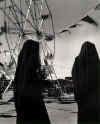 John Gutmann Strange Visitors
John Gutmann Strange Visitors 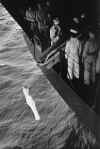 W. Eugene Smith Burial at Sea
W. Eugene Smith Burial at Sea
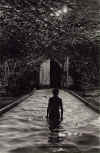 Jerry Uelsmann Untitled 1975
Jerry Uelsmann Untitled 1975
Contrast of color, texture, or shape will call attention to a specific
point.
Contrast of size or scale will as well.
Placement in a strategic position will call attention to a particular
element of a design.
 Garry Winogrand Untitled 1954
Garry Winogrand Untitled 1954
One method used to attract
attention in the design of a page or work of art is the use of a focal point. A
focal point draws your attention to the most important element on the page.
There are several techniques used to emphasize the most important object on a
page.
Ways to Create a Focal Point
Emphasis by Contrast
In realistic art the focal point is
usually quite easy to spot. Larger figures, usually found in the foreground,
provide a focal point. Even in non-realistic art, it is usually easy to spot the
focal point. If most of the figures are horizontal, a vertical element will
stand out as a focal point.
If the rest of the elements are
irregular, a geometric shape will stand out. If most of the elements are dark, a
splash of light color will catch the eye.
 Garry
Winogrand Untitled 1950s
Garry
Winogrand Untitled 1950s
Contrast in color

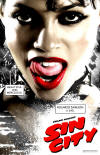
Emphasis by Isolation
If most of the elements in a work
of art are grouped closely together, an object by itself stands out as a focal
point.
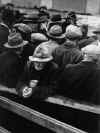 Dorothea Lange White Angel
Bread Line 1932
Dorothea Lange White Angel
Bread Line 1932
Emphasis by Placement
An object placed in the center will
often be perceived as a focal point. If all eyes in the painting look at one
object, or if an object is placed at the center of the lines of perspective,
that object will be perceived as the focus of the work.

 Sam Shere The Hindenburg
Disaster 1937
Sam Shere The Hindenburg
Disaster 1937
Objects on the top will dominate
objects on the bottom of a frame.
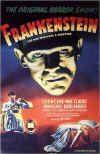
The focal point in Gericault's
Raft of the
Medusa was created using a pattern of compositional lines. The arms
and legs of the sailors, the floorboards of the raft, and the angle of the sail
all direct attention toward the rescue ship in the upper right corner.
 Theodore Gericault Raft of the Medusa, 1818-19
Theodore Gericault Raft of the Medusa, 1818-19

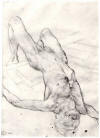

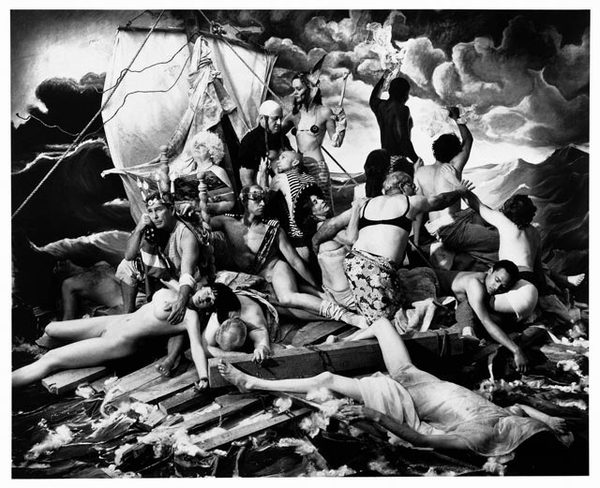

There are many parallels to the Raft of the Medusa and the Presidency of George
W. Bush. The Captain of the Medusa was an incompetent, a nobleman who owed his
appointment to the ministerial favor and not seamanship. George W. Bush is also
incompetent, a rich man's son who gained the presidency through favor and
deceit, rather than statesmanship. As politician and president, he is a
demagogue, a leader who make use of popular prejudices, false claims and
promises in order to gain and hold power. Both these men, the captain of the
Medusa, Hugnes de Chaumareges and George W. Bush are murderers. The making of
the Raft of the Medusa was the result of the "the Captain and many of his senior
officers who, caring only for their own safety, brutally commandeered the
seaworthy life boats, leaving it to the lower ranks and the soldiers to try
their luck on a raft." The abandoned people left on the ship built a raft sixty
five feet in length and twenty-eight feet wide out of the masts and beams,
crudely lashed together before the Medusa sank.
One hundred and fifty people,
including one woman, were herded into the slippery beams. So closely were the
people huddled together that it was impossible to move a single step. Mutiny,
murder, cannibalism and madness followed. After fifteen days, only fifteen
survived.
The people on the Medusa were
victims of class struggle. The people on the Raft of George Bush-his party and
regime-are the victims of their own rationale, their conservative elitism, their
hunger for political and social power and their unilateral military ambitions.
It took a very sick group of people to dream up a phony war from the tragedy of
9/11, against a country which had nothing to do with 9/11.
In
my photograph, I want to show the leaders of this regime as royalty without
clothes. As the fools they really are.
The president is seen wearing a
McDonalds gold paper crown. His despair is the result of a mind distorted by
extremism. By the lies, torture, pain and death he has caused. He is the Lear of
all inept politicians. He holds the naked body of "Condi Rice". She is his ideal
black woman. His brain-dead muse. Secretary of Defense "Rummy" lies face down
nearby, holding his glasses, wrapped in a flag of the nation. Former Secretary
of State Powell is pictured dressed only in military epaulets holding the
"proof" he presented at the United Nations for justification for the war against
Iraq. The vice-president and his wife are shown as an operatic star and diva
straining to proselytize their doctrines in song. Barbara Bush is tied to a
mast. She holds a
sun-reflector under her chin-representing her joy in basking in the sunlight of
power yet always looking like "The Quaker Oats Man". Near her is a conservative
minister trying to hang himself while a sailor performs fellatio on him.
Finally, an African American waves the flag of his mother country as he sights
the Medusa's survivors, a Chinese junk and a Space Ship.
Joel-Peter Witkin
Absence
of Focal Point:
A definite focal point is not a necessity for successful design. It is a tool
that artists may or maynot use, depending on what is desired. An artist may wish
to emphasis the entire surface of a composition over any individual elements.
An artist's theme might suggest the absence of a focal point. In Andy Warhol's
painting there are a hundred repetitions of precisely the same image with no
change, no contrast , and no point of emphasis. But the repetitive quality is
the basic point and dictated the design.
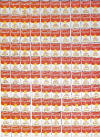 100 Cans
oil on canvas
72 x 52 in (182.9 x 132.1 cm)
Albright-Knox Art Gallery, Buffalo
100 Cans
oil on canvas
72 x 52 in (182.9 x 132.1 cm)
Albright-Knox Art Gallery, Buffalo
 Henri Rousseau
The Dream
Henri Rousseau
The Dream Isamu Noguchi Big Boy, 1952
Isamu Noguchi Big Boy, 1952
















